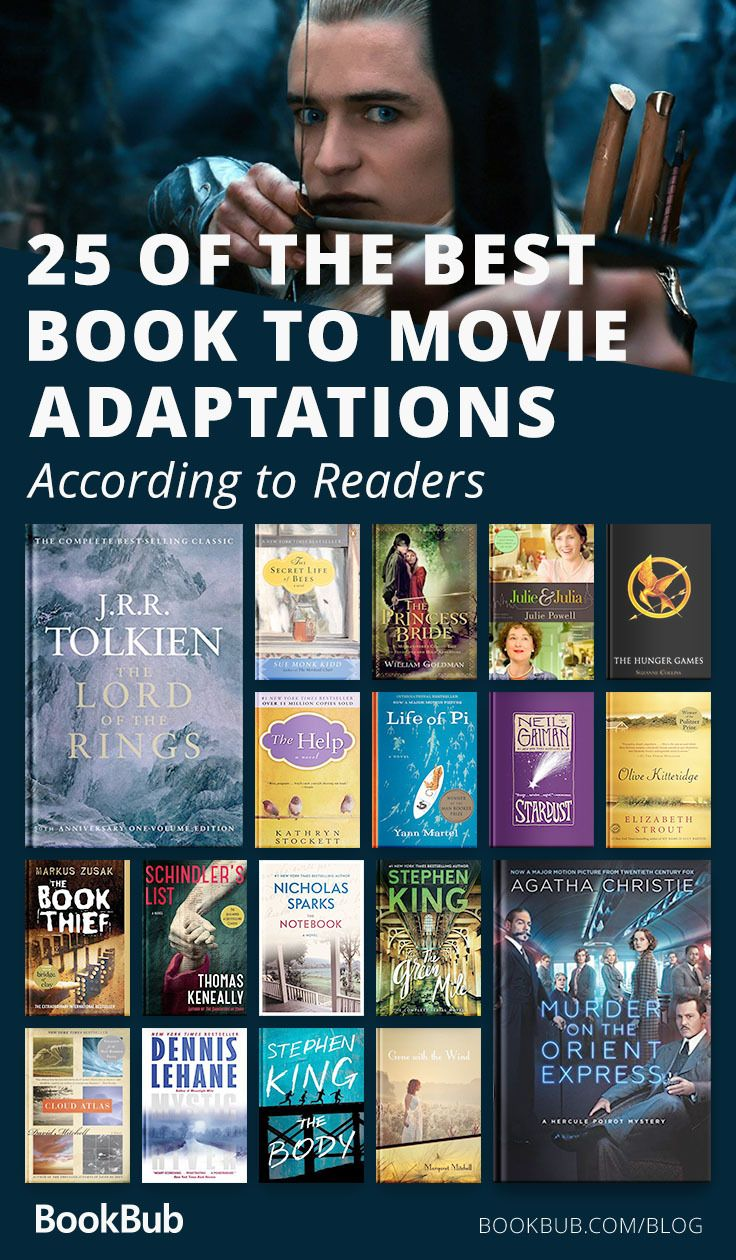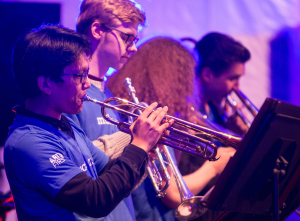Book adaptations have always stirred debate among audiences, with fans often exclaiming, “the book was better!” However, not all adaptations fall short of their literary origins; in fact, many films breathe fresh life into beloved novels, offering a new perspective that captivates viewers. As the Oscars approach, audiences can look forward to several Oscar-nominated adaptations of popular literature this season, such as “Nickel Boys” and “A Complete Unknown.” From page to screen, these film adaptations translate the depth and nuance of the original narratives, showcasing the intricate relationships between characters while bringing thrilling visuals to the forefront. Notably, the best book to movie adaptations have the potential to elevate the source material, providing an enriching experience that transcends the written word, and enticing even the most skeptical of readers to appreciate the magic of novels turned into films.
When novels get transformed into films, the outcome can elicit a variety of responses from mindful readers and moviegoers alike. Cinematic interpretations of literary works, often dubbed as literary adaptations, can vary from faithful representations to radical reimaginings of the text’s core themes. In this era of visual storytelling, film adaptations have earned a significant place in popular culture, allowing audiences to engage with compelling narratives in a visceral manner. Whether through suspenseful thrillers or heartfelt dramas, these visuals often strive to capture the essence of the original stories while making them appeal to a broader audience. As such, the connection between literature and cinema continues to flourish, with filmmakers constantly exploring the rich tapestry of written works to bring them into the cinematic realm.
The Art of Book Adaptations: Transforming Literature into Film
Book adaptations have long been a popular trend in the film industry, bridging the gap between two powerful storytelling forms: literature and cinema. While many often proclaim, “the book was better,” there are numerous examples where film adaptations not only honor the original material but also enhance it by introducing visual elements, sound, and performance. Filmmakers adapt novels not merely to recreate a story but to translate its essence into a realm where a different form of artistic expression can flourish. This is particularly evident in works that have rich imagery and thematic depth, challenging directors to infuse their own interpretations while still respecting the source material.
Imagine stepping into the evocative world of a beloved novel brought to life on the screen; each scene captures nuanced emotions and vivid landscapes, making literature accessible to an even broader audience. As the Oscar season approaches, many adaptations garner critical acclaim, further blurring the lines between genres and stimulating discussions about the fidelity of adaptations. Whether a beloved classic or a modern bestseller, the exploration of novels turned into films reveals an exciting synergy that offers viewers a fresh perspective on timeless tales.
Oscar-Nominated Adaptations: Celebrating the Best of Literature on Screen
Every year, as the Academy Awards draw near, film enthusiasts eagerly anticipate the announcement of Oscar nominees, several of which include adaptations of famous literary works. These adaptations often spotlight narratives and characters that resonate with audiences, showcasing the intersection of powerful storytelling and cinematic artistry. For instance, adaptations like ‘L.A. Confidential’ and ‘The Nickel Boys’ not only stay true to the heart of their source material but also enhance the audience’s understanding of complex themes and character motivations, making them prime contenders for prestigious awards.
Oscar-nominated adaptations serve as fantastic examples of how literature to film can bring new life to established stories. They offer both entertainment and a deeper examination of societal issues, sometimes sparking conversations that lead to a broader cultural analysis. The way filmmakers capture the essence of these narratives speaks volumes about their dedication to translating the rich, colorful tapestry of literature onto the silver screen, ultimately demonstrating that the marriage of these two art forms can produce remarkable results.
Exploring the Best Book to Movie Adaptations in Film History
When discussing the best book to movie adaptations, it’s impossible not to acknowledge the works that have reshaped cinematic storytelling. These adaptations not only tell the stories of their source material but also encapsulate the spirit of the books, allowing audiences to relive their favorite narratives from a new viewpoint. Movies like ‘The Great Gatsby’ and ‘The Shawshank Redemption’ exemplify the successful transformation of complex novels into visually captivating experiences, earning their spots in the annals of film history.
The best adaptations often innovate while remaining faithful to the original work’s themes and character arcs. For instance, the translation of intricate plots and rich narrative voices into sharp, engaging scripts can lead to exhilarating films that capture viewers’ imaginations. Critics may debate what constitutes the “best” adaptation, but the consensus remains that transforming impactful literature into compelling films is a challenging yet rewarding endeavor—a celebration of creativity that continues to inspire filmmakers.
The Unique Challenges of Adapting Novels into Films
Adapting a novel into a film presents a myriad of challenges, as filmmakers work to distill the essence of the source material into a cohesive visual format. The biggest hurdle lies in the contrasting depths of storytelling: novels often delve into characters’ internal thoughts, complex backstories, and intricate plots that can be difficult to convey within the constraints of a two-hour film. This unique challenge requires screenwriters and directors to make tough decisions regarding what elements are essential to the story and how they can be best represented visually.
Furthermore, the nuances of pacing are a critical factor in ensuring that the narrative translates well onto the screen. Filmmakers face the daunting task of balancing character development with plot advancement, all while keeping the audience engaged. Decisions must be made about which scenes to condense, modify, or completely reimagine to maintain the original spirit and emotional impact of the novel without overstaying cinematic welcome—a delicate balance that can ultimately make or break an adaptation.
How Adaptations Can Breathe New Life into Marginal Novels
One of the remarkable aspects of film adaptations is their power to transform lesser-known or even mediocre novels into compelling cinematic experiences. Films can inject new energy into stories that may not have captured readers’ attention in print. Consider adaptations like ‘American Psycho,’ where the film successfully amplifies the dark humor and societal critiques of Bret Easton Ellis’s novel, allowing audiences to see beyond the pages and appreciate the material in a new context. This innovation can enhance the narrative’s impact and broaden its reach, bringing previously overlooked works to the forefront.
Moreover, these adaptations can offer different interpretations that deviate from the original text, enabling filmmakers to explore themes and character arcs in fresh, imaginative ways. By embracing creative liberties, directors and screenwriters can engage audiences who may not have resonated with the book itself, highlighting the versatility of storytelling across mediums. This ability illustrates how adaptations can breathe new life into narratives, stimulating discussions and encouraging viewers to reflect on literary themes through a different lens.
Cinematic Techniques Derived from Literary Masterpieces
The transmutation of novels into films not only involves narrative adjustments but also the adoption of cinematic techniques that enhance storytelling. Filmmakers often draw inspiration from literary devices such as symbolism, motifs, and themes, translating them into visual elements that resonate on-screen. For instance, the use of color palettes, framing, and cinematic lighting can accentuate emotions that might otherwise remain latent in the text. Directors like Martin Scorsese have mastered this technique, infusing their films with rich visual storytelling that pays homage to the literature that influenced them.
This artistic dialogue between the written word and film can highlight how different mediums can communicate complex ideas powerfully. Many adaptations explore elements such as unreliable narrators or fragmented timelines borrowed directly from the source material, enhancing audience understanding while providing a fresh narrative structure. Such innovative techniques demonstrate the symbiotic relationship between literature and cinema, emphasizing how the transformation from page to screen can elevate storytelling to extraordinary new heights.
Character Development in Adaptations: A Double-Edged Sword
Character development can be one of the most powerful aspects of any novel, contributing to its emotional depth and meaning. When adaptations take to the screen, filmmakers must grapple with the challenge of distilling this growth and complexity while ensuring that audiences can connect with the characters in a limited runtime. Sometimes, films successfully expand upon these characters, offering deeper arcs and richer interactions, as seen in adaptations like ‘Misery’ where Annie Wilkes’s portrayal brings a new depth to the narrative. However, this character exploration can sometimes falter, diluting the essence of the original character or reshaping them into a different persona that may not resonate with die-hard fans of the book.
Additionally, the changes made during adaptations can create a dichotomy between maintaining the integrity of the character and appealing to cinematic conventions. Filmmakers may feel pressured to make their characters more dynamic or relatable to modern audiences, sometimes leading to alterations that can alienate fans of the source material. Striking the right balance between contextually adhering to the book and tailoring the characters to a visual medium presents a compelling challenge that can either make or break the success of an adaptation.
Exploring the Evolution of Adaptations Over Time
The process of adapting literature to film has undergone significant evolution over the years, reflecting shifting cultural attitudes and advancements in filmmaking technology. Earlier adaptations often took a more literal approach, striving for fidelity to the text, while contemporary interpretations may take more creative liberties. This shift can lead to original narratives or environments that complement or contrast with the themes of the source material. For example, modern adaptations of classics sometimes recontextualize stories to resonate with contemporary societal issues, creating a dialogue between the past and present.
Additionally, changes in audience preferences and viewing habits have influenced the adaptation landscape. With the rise of streaming platforms, adaptations have diversified, catering to different audience segments and offering serialized formats that allow for deeper storytelling. This means filmmakers can explore complex novels in expanded interpretations, while still catering to fans of the original literature, adding a rich dimension to adaptations that continues to evolve with technology and artistic exploration.
Film Adaptations as a Platform for Social Commentary
Film adaptations have the unique capacity to serve as a platform for social commentary, amplifying voices that literature may have previously marginalized. By translating narratives that address significant social issues—from racism to mental health—into cinematic form, filmmakers can reach broader audiences and inspire conversations around these critical themes. When stories like ‘The Nickel Boys’ are adapted, they highlight the importance of bringing light to historical injustices and foster greater awareness about society’s ongoing struggles.
These adaptations encourage viewers to engage not just with the stories themselves but also with the broader context they inhabit. Through the combination of visual storytelling, performance, and sound, filmmakers can evoke emotional responses and prompt audiences to reflect upon the implications of the narratives presented. Such adaptations emphasize how literature can transcend its original framework, creating powerful connections that resonate across generations while urging societal introspection and change.
Frequently Asked Questions
What are some of the best book to movie adaptations that have been Oscar nominated?
There are several remarkable book to movie adaptations that have received Oscar nominations, showcasing the strength of literature translated to film. Some notable examples include ‘The Godfather,’ based on Mario Puzo’s novel, ‘The Shawshank Redemption,’ adapted from Stephen King’s novella, and ‘The English Patient,’ based on Michael Ondaatje’s book. Recently, films like ‘Nickel Boys’ and ‘Conclave’ have also earned recognition during Oscar season.
Why do some people think the book is always better than the film adaptation?
The belief that ‘the book is better’ often stems from the depth and detail that literature can provide. Books allow for inner thoughts and complex narratives that are sometimes lost in film adaptations due to time constraints. Adaptations often simplify plots or change characters, which can frustrate purists. However, this viewpoint can neglect the creative interpretations that filmmakers bring when adapting novels to films.
Can you name a few novels turned into films that significantly improved the original story?
Certainly! Some novels turned into films have seen enhancements through their adaptations. A prime example is Mary Harron’s version of ‘American Psycho,’ which infused humor into Bret Easton Ellis’s bleak narrative. Another is ‘Where Are You Going, Where Have You Been?’ by Joyce Carol Oates, adapted by Joyce Chopra, which expanded on character dynamics and nuances not present in the short story.
What factors contribute to a successful film adaptation of a novel?
Successful film adaptations often prioritize fidelity to the source material while also embracing creative liberties that enhance storytelling. Factors such as strong screenplay writing, solid direction, casting choices, and an understanding of the thematic essence of the book contribute significantly. Additionally, films that convey the emotional journey and develop characters thoughtfully tend to resonate better with audiences.
What makes a book worthy of a film adaptation?
A book is often deemed worthy of a film adaptation if it has a compelling narrative, strong character development, and universal themes that resonate with diverse audiences. Books with cinematic qualities, such as vivid imagery and dramatic conflict, tend to translate well onto the screen. Classic examples include works like ‘L.A. Confidential’ and ‘Misery,’ both of which have broad appeal and strong dramatic arcs.
How do filmmakers handle the challenge of condensing a lengthy novel for film adaptations?
Filmmakers often face the challenge of condensing lengthy novels by focusing on key plot points and character arcs. This usually involves prioritizing essential scenes and dialogues that advance the story while preserving the original tone. Filmmakers may also streamline subplots or adjust character backstories to fit the film’s runtime, which can lead to significant changes from the source material.
Are there any specific genres of literature that are particularly suited for film adaptations?
Certain genres lend themselves particularly well to film adaptations, such as fantasy and adventure, due to their visual possibilities; mystery and thriller, with their inherent suspense; and romance, which often thrives on character relationships. Additionally, horror novels, like Stephen King’s works, translate effectively into films, providing intense visual experiences that maintain audience engagement.
What are some techniques used by filmmakers to maintain the essence of a book in its film adaptation?
Filmmakers maintain the essence of a book through various techniques, including careful casting to embody the characters, faithful translations of key dialogues, and visuals that resonate with the book’s themes. Additionally, employing a strong score can evoke the same emotional responses that readers feel while engaging with the text, creating a bridge between the written and cinematic experiences.
| Book Title | Author | Adaptation | Key Insights |
|---|---|---|---|
| Misery | Stephen King | Film: Misery (1990) | Explores themes of writing and fame amidst horror. |
| L.A. Confidential | James Ellroy | Film: L.A. Confidential (1997) | Offers a gritty portrayal of corruption within Hollywood. |
| Jack Reacher Series | Lee Child | Films: Jack Reacher (2012), Jack Reacher: Never Go Back (2016) | Focuses on a wandering hero and themes of justice in pop fiction. |
| The Hoods | Harry Grey | Film: Once Upon a Time in America (1984) | Transformed into a visually operatic experience by Leone and Morricone. |
| American Psycho | Bret Easton Ellis | Film: American Psycho (2000) | Reinterprets the novel’s dark humor and social satire film. |
| Where Are You Going, Where Have You Been? | Joyce Carol Oates | Film: Smooth Talk (1985) | Deepens character exploration and alters the story’s ending. |
Summary
Book adaptations have sparked countless debates about their merits, often leading to the familiar assertion that “the book was better.” However, many adaptations resonate well with audiences and elicit new perspectives on the original texts. Notably, adaptations like *Misery* and *L.A. Confidential* reflect the potential of film to bring literary narratives to life while retaining their core themes. Engaging with adaptations allows fans and newcomers alike to explore how visual storytelling can enhance or reinterpret the written word, showcasing the dynamic synergy between books and their cinematic counterparts.









